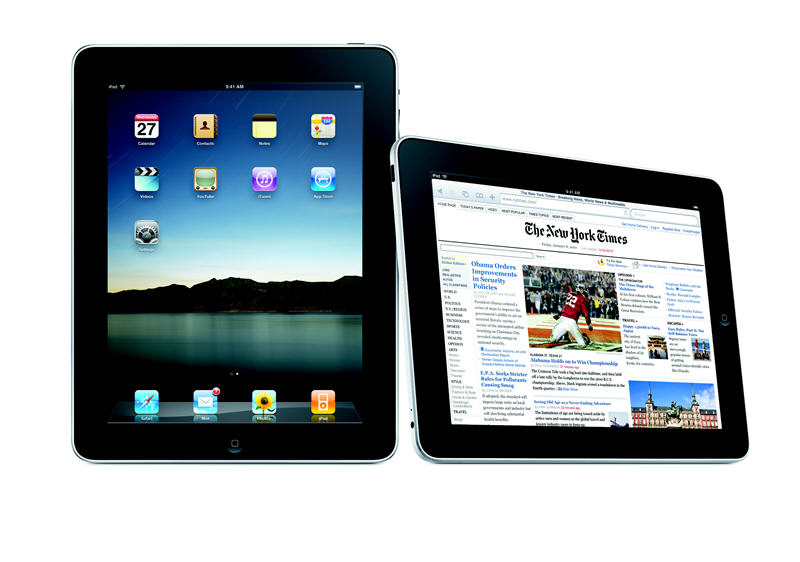Devices like the iPad and HD screens on phones and TV devices will help drive up the standard, demand and value of photography leading to a renaissance of the photography professional, the head Europe’s leading photography body said this week.
Christina Vaughan, founder and CEO of Image Source and president of the European trade body CEPIC (Co-Ordination of the European Pictures Agencies Stock, Press & Heritage), which represents over 1,000 picture sources in Europe, was speaking to siliconrepublic.com during CEPIC’s annual congress in Dublin this week. The event was attended by 650 professionals from 35 countries.
Vaughan’s Image Source is a fully digitised company that trades directly through the internet as well as through an extensive network of more than 200 photo agencies in 80 countries around the world.
I put it to Vaughan that the rise of the internet and the ease with which anyone using a browser can effectively grab any image from any site regardless of copyright has clearly been a grave threat to the photography profession.
Yet at the same time the onset of devices like the iPad or the forthcoming iPhone 4 and the new Samsung Wave HD phone which all feature HD screens, not to mention the newly arriving web-connected TVs, surely must indicate that quality images in high definition could safeguard the profession’s future.
“You are prescient in what you are saying, such observations have been discussed thoroughly over the last three days in Dublin. As much as there has been an oversupply of imagery and accessibility to photo resources has been greater than ever, there’s a huge amount of opportunity in high definition.
“As many threats that technology presents to the profession, there are as many opportunities. The first point is how easy it is to find images on Google – anyone born after 1990 thinks most things are free and that is a perception that most creators are riding against, from artists to photographers, musicians and writers.
“With the advent of Flickr and Facebook, people are thinking to ask what is the provenance of this item I am sharing freely. But conversely there’s great quality arising on these sources to insofar as it is challenging for photo agencies to differentiate a professionally generated image from user generated content. That no doubt led to a great deal of fear.
“But now there are some very interesting developments. The perfect example is the iPad, this will lead to higher expectations in terms of visual literacy – provenance, the original source of quality imagery will matter because the means will exist to define who is the copyright holder, who has the right to license that image, carefully and properly.”
Against the economic backdrop that has seen newspapers and magazines around the world fold or be sold, Vaughan argues that in fact a renaissance in HD quality products will contribute to an upsurge in media’s fortunes.
“Traditional media has been challenged, print has gone down yet more pictures than ever are being used. People are becoming more visually literate.
“Look at the huge numbers of blogs, online newsletters … it’s an exciting time for imagery. The next step is the fact that now with the technology, higher expectations of how images are represented on devices like the iPad will arise.
“It really is a time of renaissance for the photo professional – more pictures without doubt are being used than ever before and this provides a lot of opportunity.”
Copyright identification techniques and technologies such as watermarking will be key and Vaughan cited one company at the congress, PicScout, which developed a software program where every image is credited making it easier to track provenance. “PicScout has developed an even more sophisticated form of traditional watermark”
I ask Vaughan if CEPIC has tackled the internet giants like Google or Facebook on whose sites people are sharing and sending imagery, ignorant of the fact that some of it is copyrighted.
“We’ve been having conversations with Google specifically in terms of Google Images. There are amazing technologies that ISPs have available to identify the use of copyrighted material and we want to work with them to generate revenue streams for professional photographers and copyright holders. It’s a huge opportunity and by sharing images there is a great opportunity for monetisation.
“Look at Flickr, there is so much raw photography that genuinely captures the moment and there is enormous revenue stream potential. Getty Images, as far as I know, have been having a dialogue with Flickr about this,” she said.
Vaughan said that bridging the gap between the professional and the amateur in the photography world threads neatly into the Web 2.0/social media edict surrounding the producer and consumer of media – the prosumer.
“The questions internet companies need to be asking is how can we make this work for you? What is happening with consumers and can we build an environment where professional image makers can thrive too?
“Every age gets a taste for imagery and if people are not investing in photography then it makes it difficult to keep standards up and raise the bar.
“There are so many parallels in terms of what happened in music and what has been happening with photography. There has been a negative side, but there can be a positive side too,” Vaughan said.
Photos: Christina Vaughan (above), president of CEPIC and founder and CEO of Image Source. Could devices like the iPad (below)lead to a renaissance for the photography profession in terms of appreciation for HD quality imagery?
